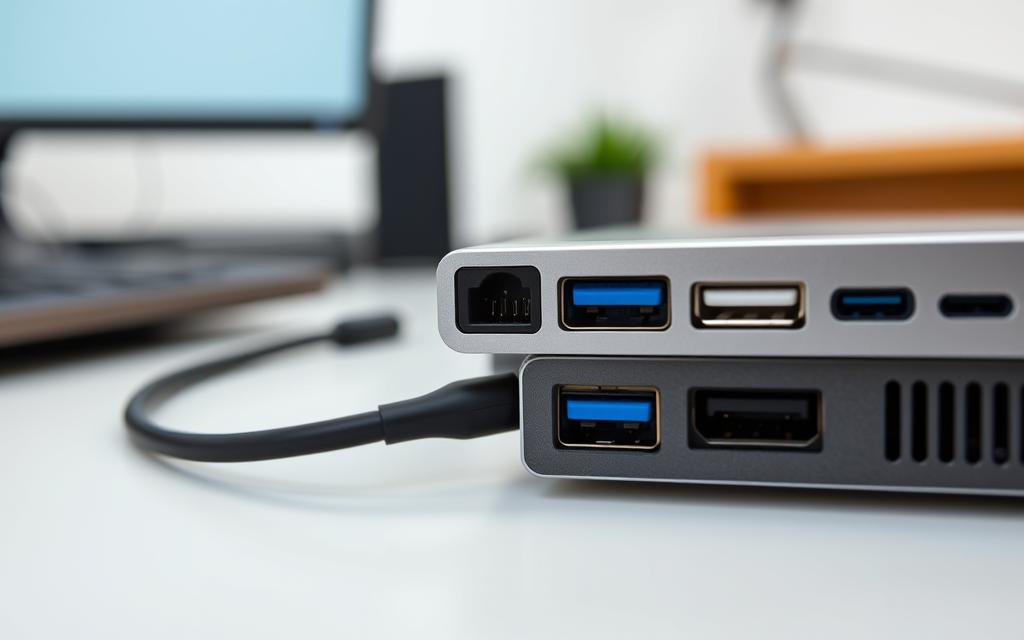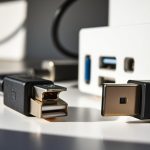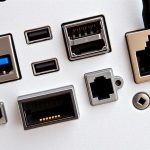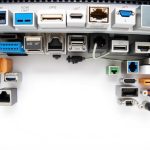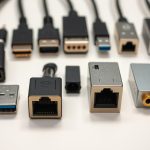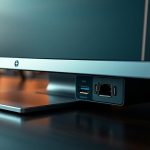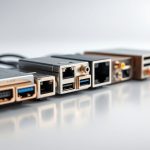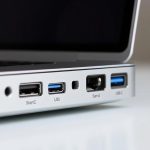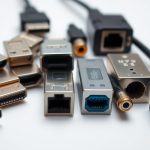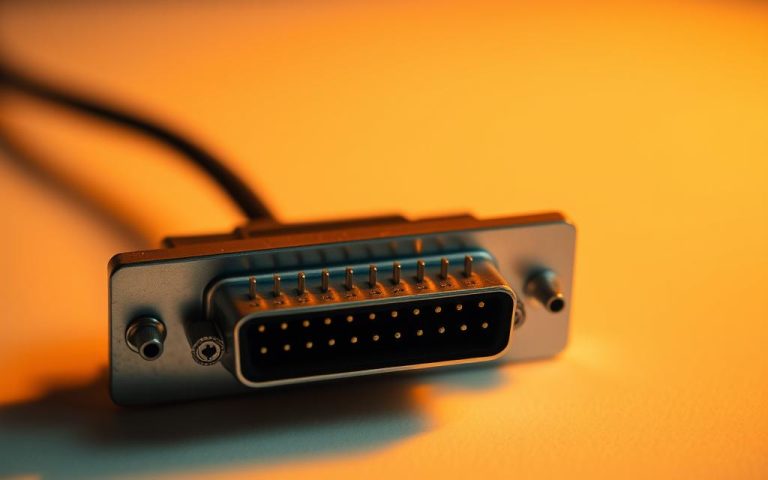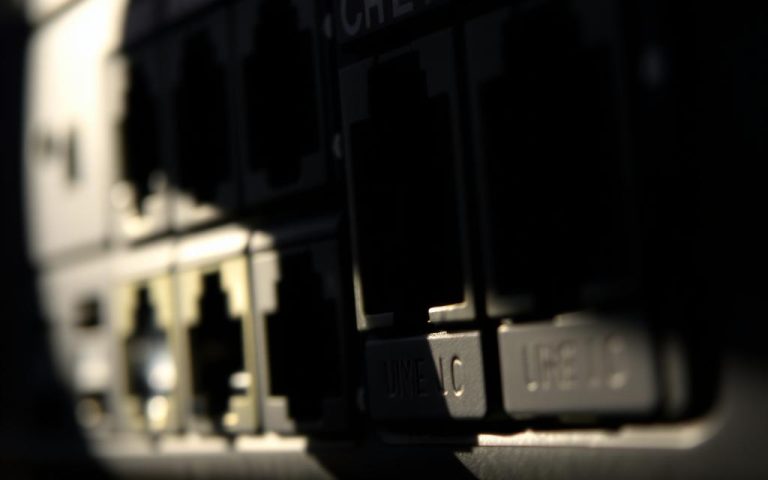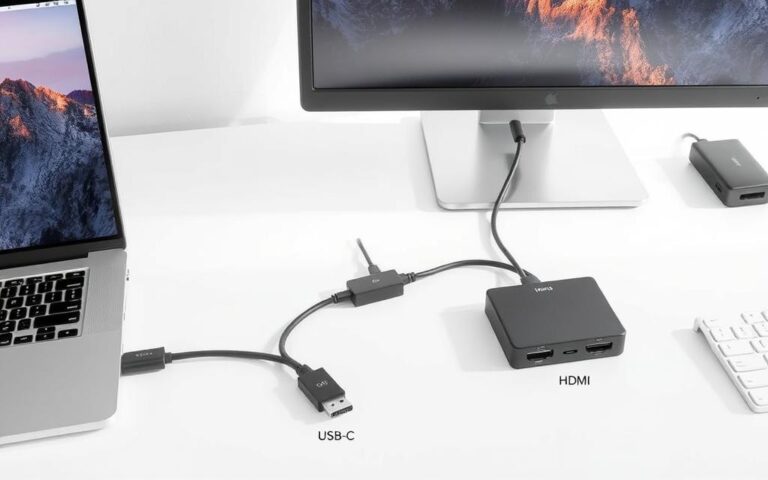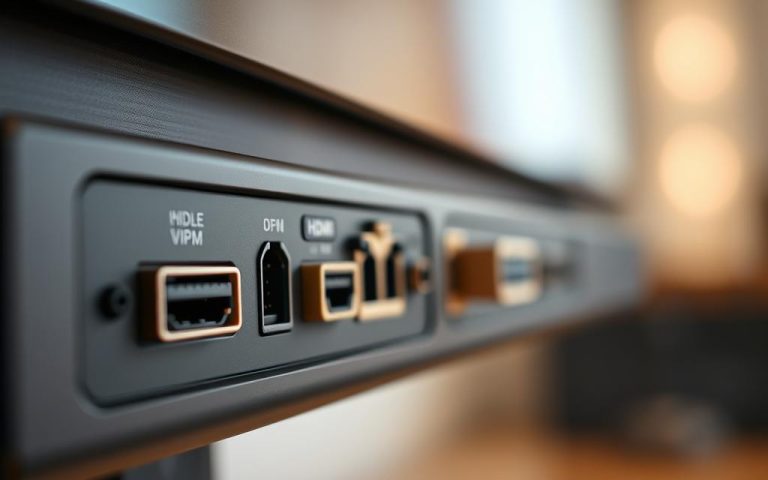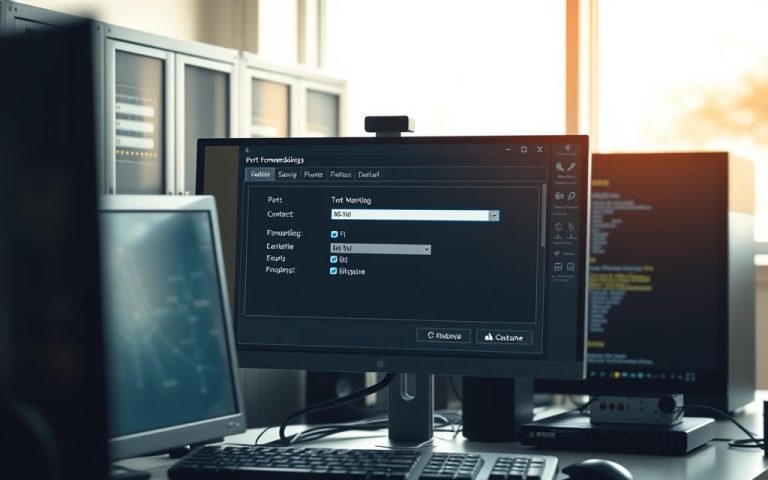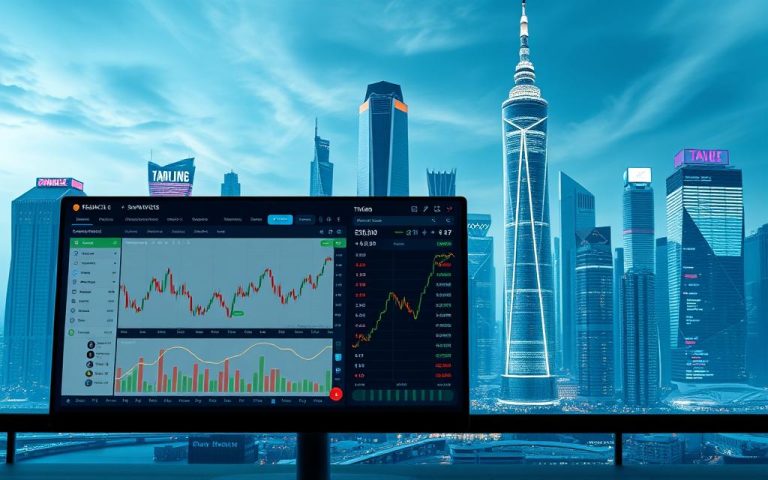How to Locate USB Ports on Your Computer
Finding where your computer’s USB ports are located is crucial. It helps you link up with lots of different devices easily. Many people find it hard to connect things like printers or keyboards. They often ask, “where is my USB port?” This guide will show you how to spot USB ports on various computers. It will also explain the different types of USB ports. Understanding this will make it easier for you to connect your devices. This means you can enjoy using your computer more.
Understanding USB Ports and Their Types
USB ports are essential for linking computers to various gadgets. The USB port definition is the standard way to connect for sharing data and power. It’s crucial to know the types of USB ports to connect devices well.
What is a USB Port?
A USB port is a universal interface for transferring data and powering devices. It started in the 1990s and has gotten much better over time. Today, we mainly use USB 2.0 and USB 3.0, each designed for specific needs according to USB specifications.
Different Types of USB Ports
There are various types of USB ports for different devices:
- USB Type-A: The standard connector on computers and chargers.
- USB Type-B: Mainly for printers and big devices.
- Mini USB: For older digital cameras.
- Micro USB: Used in smartphones and small gadgets, smaller than Mini USB.
- USB-C: Reversible, for fast data and power, gaining popularity in new tech.
Recognising USB 2.0 vs USB 3.0 Ports
Telling USB 2.0 and USB 3.0 ports apart helps with device compatibility and speed. USB 2.0 can transfer data up to 480 Mbps, using mainly Type-A and B. However, USB 3.0 blasts data at 5 Gbps. It charges faster too, offering up to 4.5W, higher than USB 2.0’s 2.5W. Look for blue inserts to spot USB 3.0 ports. Knowing this can boost how well your devices work together.
Visually Identifying USB Ports on Your Computer
Learning how to find USB ports on your computer can make a big difference. Knowing the USB port locations is key when you’re plugging in gadgets like printers, keyboards, or cameras. This knowledge helps set up or fix any connection issues easily.
Common Locations for USB Ports
Desktops often have USB ports on both the front and back. This makes it easy to connect things without reaching too far. It’s best to plug in mice and keyboards at the back. This keeps things neat and performs better. USB has become more common than older port types, showing its importance.
How to Distinguish Port Colour Codes
Different USB ports have specific colour codes. These colours tell you which type of USB port it is. For example, USB 3.0 ports are blue, and USB 2.0 ports are usually black. USB 1.0/1.1 ports are often white. This makes identifying them quick and easy. New devices might have USB 3.1 ports in red or ‘Always On’ ports in yellow.
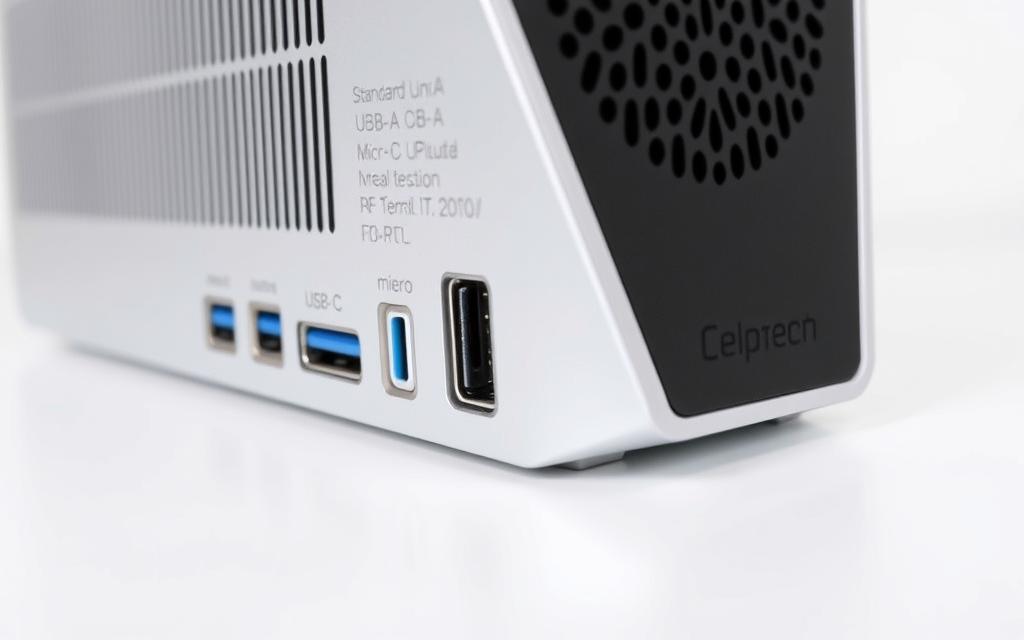
If you want to know more about computer ports, there are resources to help. You can learn about each unique connection to use your computer better.
Where is my USB port on my computer?
The location of USB ports on your computer can vary, depending on what system it runs. Each operating system has its own way to help you find the USB port, whether it’s on a Windows PC or a Mac. This means you can easily connect devices and make the most of your ports.
Finding USB Ports on Windows Computers
On a Windows computer, you start by going to the Device Manager. You can get there from the Start menu. Once there, if you look under Universal Serial Bus controllers, you’ll see all the USB ports you have and what they’re like. Remember, USB-A 3.0 ports work with both USB 2.0 and 3.0 cables, which gives you more ways to connect.
Identifying USB Ports on Mac Computers
If you’re using a Mac, you’ll find USB ports differently. Click the Apple icon to open the System Profiler. Go to the Hardware section, and click on USB to see info about the ports you have. Since Apple doesn’t use colours to tell ports apart, check official resources to understand your ports well. For example, Thunderbolt 3 ports can use both Thunderbolt and USB-C cables, letting you connect more easily.
By understanding these methods, you can better navigate your systems. For deeper insight on USB protocols and specs, see additional resources here. With proper knowledge and tools, you can use your device to its fullest potential.
Using Software to Locate USB Ports
Several USB port software tools help in managing USB ports. For Windows users, the Device Manager is a top choice. It gives a detailed view of connected devices. By looking into the “Devices by connection” section, tracking devices and solving problems becomes easier.
Utilising Device Manager in Windows
The Device Manager lets users look for new hardware changes. It shows devices that might not be visible at first. This is great for solving USB issues. Looking up instructions on fixing USB-C problems in Windows can help with any port issues.
How to Use System Profiler on a Mac
Mac users have strong tools for identifying USB ports too. The System Profiler gives detailed info on connected USB devices. Depending on their Mac model, users might see different port types. This includes USB-A, USB-C, and Thunderbolt ports for different cables.
Exploring USBView for Detailed Information
Windows users have USBView as an extra tool. It is part of the Windows SDK. You can find it at C:\Program Files (x86)\Windows Kits\10\Debuggers\x64. USBView offers detailed data on USB controllers and devices. It’s a great tool for deep USB analysis and solving problems.
FAQ
What are USB ports?
USB ports, short for Universal Serial Bus, help different devices connect and share data. These include various types like USB Type-A, Type-B, Mini USB, and Micro USB. They make it easy for gadgets like computers, printers, and smartphones to talk to each other.
How can I identify the types of USB ports on my computer?
To spot different USB port types, look at their color and shape. USB 3.0 ports are usually blue. USB 2.0 ports are black or white. Type-A ports are rectangular, while Type-B ports are more square in shape.
Where can I find USB ports on my laptop or desktop computer?
On desktop computers, find USB ports on the front and back. Laptops have them on the sides. They’re placed where you can easily plug in devices.
How do I find USB ports on a Windows computer?
To find USB ports on Windows, go to the Start menu and open Device Manager. Look under Universal Serial Bus Controllers. Here, you’ll see the ports and connected gadgets.
How can Mac users locate USB ports?
For Mac users, click the Apple icon, then ‘About This Mac’, and go to ‘System Profiler’. Choose USB under Hardware for info on devices.
What software can help me manage USB ports on my computer?
To manage USB ports, Windows users can use the Device Manager. Mac folks should try System Profiler. Also, both can use USBView from the Windows SDK for a deep dive into USB ports and devices.
What’s the difference between USB 2.0 and USB 3.0?
USB 2.0 and USB 3.0 mainly differ in speed. USB 3.0 transfers data much faster. This makes devices work better and connect quicker.

